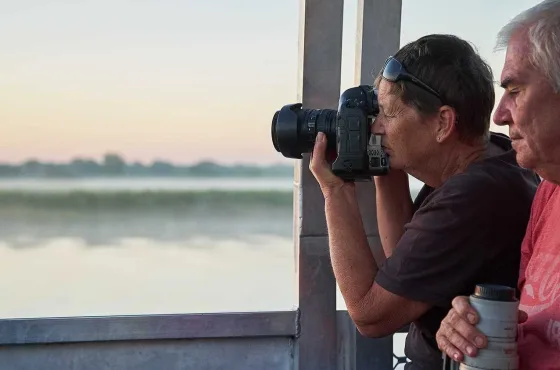
Tips for Bird Photographers
While exploring Kakadu national park you may come across some unique wildlife. While the parks crocodile population is a must see you might not know but about a third of Australia’s bird species also call this park home. Depending on what season different species migrate to and from the park to breed. With so many unique species in one place its prime opportunity to grab some pictures that will rival your calendar!
For all of us amateur photographers out there one of the most important things you do before you set out is to prepare, dress yourself and the gear for the environment. Also please remember that the park is a nature reserve and to be respectful of the animals when you try and take a shot.
A great way to prepare and find out about the birds is to download the Kakadu Visitor guide app and the Kakadu Birds app. A quick note when viewing birds please do NOT use bird calls to attract
Kakadu Visitor Guide


Kakadu Birds


Tip 1: Shoot Everything, Shoot Often!
Practice makes perfect is a universal rule, don’t be put out if you can’t get a shot worthy of national geographic on your first outing. Getting practice is easy at Kakadu, with so much to see and do take every opportunity to get familiar with your camera and the subject matter whether it be the amazing vistas or the flourishing plants and wildlife. As Joel Lee says ‘‘look for those interesting photo opportunities and always have your finger on the ‘trigger’ to capture those once in a lifetime moment,’’ you’ll be kicking yourself if you miss out.
Tip 2 : Lighting
You may have heard many photographers talk about lighting. Manipulating light is one of the ways to take your photograph to the next level. The most common tip about lighting is don’t take photos at midday. The height of the sun creates dark shadows, taking photos when the sun is low or on a cloudy day can drastically improve the photo quality. For a more in-depth explanation of how to lighting is used check out NatureTTL’s video and for a quick explanation of the exposure triangle make sure to read through Fstopper’s article to setup your camera before you leave.
Tip 3: Animal Behaviour
Something you may find interesting about wildlife photography is that many of the photographers that get the best photos are biologists first and photographers second. Knowing your subject’s behaviour is key to getting those unique and memorable photos. Before you leave go out for the day take a gander at the Kakadu bird app to find out about what’s going to be around you on the day and where and how to search for that bird.
Tip 4: The Approach
To paraphrase the Technique to approach shy birds list by Nasim Mansurov;
Blend into the environment, don’t wear bright colours, a grey shirt and jeans will do you fine
When you’ve spotted an opportunity slow down gradually and don’t make sudden movements, approach slowly (half a meter/minute) and preferably not in a straight line.
Don’t stare at the bird on approach and check if its scared (raised tail feathers), your camera shutter may also scare the bird so take shots on approach to let it get used to the sound or turn off shutter sound (if possible).
Finally, keep your noise to a minimum, watch where your walking and have your phone on silent!
Tip 5: Patience and Persistence.
Being patient is key! Don’t be down if you don’t get that perfect photo, remember the pro’s have been at this for years to hone their skills. However, when you find that photo opportunity be prepared not only to wait but also to keep your head on a swivel. Keep both eyes open when waiting for that snapshot, a picture says a thousand words and catching a story is even better for the more adventurous among us braving the bad weather with the right protection can get some amazing shots!




